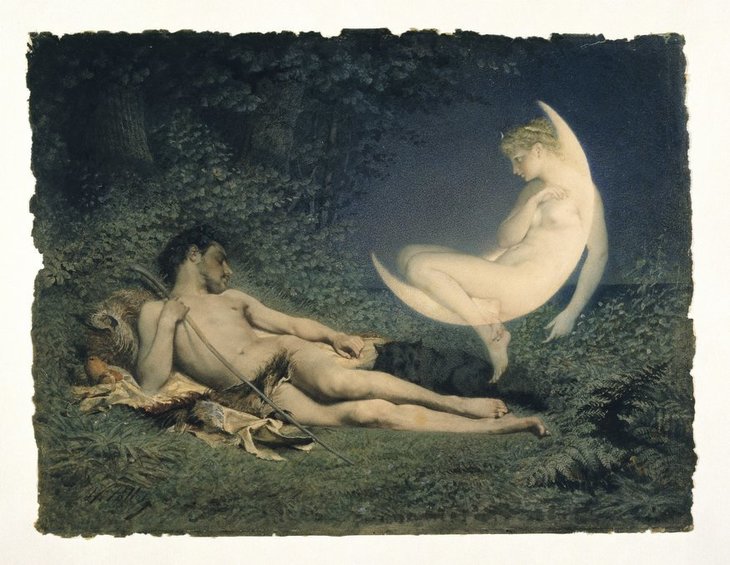Celebrate 50 Years Of The Moon Landings At This Stellar Exhibition
Looks like this article is a bit old. Be aware that information may have changed since it was published.

It is thought to have driven men to madness and controlled women's menstrual cycles. It's been anthropomorphised as a goddess on a flying chariot led by an antelope, and conspiracy theorists still believe we've never set foot on it. It is of course our only natural satellite, the moon.
To mark 50 years since the first moon landing, National Maritime Museum hosts a major exhibition on all things lunar, filled with artefacts and cultural references to the moon.
Thanks to astronomers and lunar missions we know plenty about the moon, but it wasn't always that way. A cute illustration from 1793 shows children building a ladder to grab it. It was drawn at a time when the idea of actually travelling to it must have seemed pure fantasy.
Our history with the glowing white disc in the night sky goes as far back as records do. A cuneiform tablet from over 2,000 years ago shows an early record of the moon's phases with a lunar eclipse viewed as a dark omen.

Given how little attention we pay to the moon these days, this exhibition highlights how important it once was to daily life. Sailors, of course, used it to navigate. In Japan, moon viewing parties were held to pray for a good harvest. It was the muse of landscape painters such as Turner and Constable.
Science fiction has always been fascinated with finding civilisations on the moon. The most fantastical in this show is The Man on the Moone, a tale of Domingo Gonzalez who flies to the moon on a chariot pulled by geese, to discover a Christian society known as Lunars living there.
Understandably, a whole section is dedicated to the space race and the astronomical achievements of the Apollo missions, plus the Soviet pioneers who achieved the world's first animal, man and woman in space, only to be pipped to the moon by the Americans.

The highlight in this section is a stirring short film made from footage of the Apollo missions showing astronauts travelling to, and walking on, the moon. Nobody has set foot on the lunar surface since 1972 and it's depressing to think the furthest humanity has travelled was achieved before I was born, but it's also impressive that they managed it with computing power far less advanced that today's.
The exhibition ends with talk of other countries including India and China aiming for the moon, suggesting that the age of lunar exploration isn't over. Given what we've done to our own planet, it's a concern that we may pillage the moon's resources in an unsustainable manner as well.

When Neil Armstrong took his first step on to the moon, the entire world watched what was arguably humanity's greatest accomplishment. I can only imagine what it must have been like to witness this first hand and it's inspiring to know that humanity has gone from worshipping the moon to planting a flag on it.
Through a series of small steps this exhibition reminds us of the importance of Earth's constant companion among the stars in shaping our civilisations. Now it's time to take a giant leap to Greenwich and go see this excellent exhibition for yourself.
The Moon is on at National Maritime Museum, Greenwich from 19 July to 5 January. Tickets are £9 for adults.
Last Updated 18 July 2019




